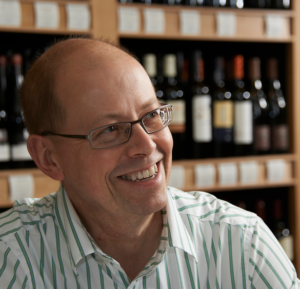
Whilst I never really stop sniffing and searching out the best wines for WineTrust100, there are certain times of the year when this “work” becomes more concentrated. I thought you might be interested in hearing about one of those periods and what it actually involves.
My raison d’être, overall, can be summarised quite straight forwardly – I am constantly looking for wines which not only offer the highest quality for their price, but where relevant new and exciting styles providing variety and original drinking experiences. And yes, we also need to keep a good stock of classics – those benchmark grapes, regions and styles which we are all familiar with and enjoy so much. There are two concentrated periods for tastings in the UK – the New Year and the autumn.
It is not unusual in these periods to receive invitations to tastings on every day of the working week! This may sound like a kid being let loose in a chocolate factory but you have to remain focused and disciplined (if that doesn’t sounds too pompous) – and keep in mind our Wine Trust 100 ethos throughout. The majority of these tastings are in London, so this involves a regular cycle ride to the station (I never drive unless I have absolutely no choice) and then a tube ride to the venue.
I always pre plan the tasting by looking at the catalogue in advance and putting together a “shopping list”. This saves time on the day but is also practical as some events may be pouring 500 wines or more and – even I – couldn’t taste that many in one go! My general approach is to get there early and beat the trade crowd (if possible). I usually do sparkling wine first, then whites – then red, finishing with sweet and fortified; but you can just as easily switch the red and white section around.
Subject to the event’s size I would always aim to taste over 100 samples each time, maybe up to 200, but after that palate fatigue will start to kick in and judgement suffer as a result. And therefore it will come as no surprise to you as to why you have to spit out! The key aspect to this discipline is that you have a wonderful opportunity to range taste wines of a similar type, region, grape or price and cross reference them to each other to find the best on offer. Sometimes, though, this might mean that none of what is on offer is good enough – or at the right, or fair price. Along the way you make notes on the wines you rate (and don’t bother with those you don’t) which later form the basis of the text you see on the Wine Trust 100 web site.
We nearly always taste in the trade in the morning – sure this may extend into the afternoon. This is because your palate is at its sharpest then and you can make judgements which are more accurate. You also have to remain as objective as possible. By that you have to taste a wine on its intrinsic value and merits and not make judgements solely on what you like personally to drink. To try and quantify this – however anecdotally – maybe 5-10% of the wines I taste at a fair will make it forward for further consideration. This process then involves asking the agent or supplier to send in another sample to the WT100 office where it is re-tasted – as a group – and finally (we would hope) makes it onto the shortlist. By that it may not go straight onto the web site for sale, as we keep an ongoing reserve list where approved wines sit waiting for a slot – or for one of the other similar category wines to sell out.
That way we keep the whole portfolio refreshed and vital, which – along with finding wines which over deliver for their price – is fundamentally what we are about.
On a final note – and my dentist will willingly testify to this – I do have to take particular care of my teeth through this process. Tasting to this level puts a lot of physical and chemical pressure on them and this can take its toll, and not least red wines – especially young, deeply coloured ones which easily stain your teeth. The one advantage of this though is that on the journey home on the tube one smile at other passengers and you tend to find you get a seat to yourself!
Next time I would like to chat more about the wine and food pairing aspect of the industry – and share more of my thoughts and (I hope) recipes as I am a fervent, amateur cook. I have the great pleasure, as part of my broader trade role, to work with some of the finest chefs in the country and their knowledge and enthusiasm really does rub off. Also it is fundamentally what wine is all about – matching it with food, whether straight forward home cooking or the finest Michelin * dishes.
Santé
Nick Adams MW
